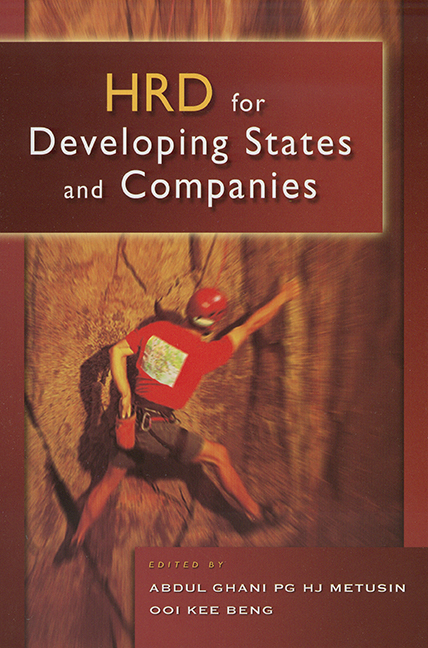Book contents
- Frontmatter
- Contents
- Foreword
- Preface
- Editorial Remarks
- Acknowledgements
- Introduction
- HRD for Statesmen
- HRD Strategies for Companies
- Competence Development
- 13 Creating Sustainable Competitive Advantage Through People and Culture
- 14 Maximizing Workforce Efficiencies with Effective Change Management
- 15 The Rise of the High Performance Learning Organization
- 16 Performance Measurement and Management
- 17 Strategies to Help People Learn and Perform
- 18 Maximizing Talent for Maximizing Result
- 19 How Investing in Human Capital can Translate Positively into the Organization'sPerformance — The Role of Benchmarking
- Corporate Experiences
- About the Authors
14 - Maximizing Workforce Efficiencies with Effective Change Management
from Competence Development
Published online by Cambridge University Press: 21 October 2015
- Frontmatter
- Contents
- Foreword
- Preface
- Editorial Remarks
- Acknowledgements
- Introduction
- HRD for Statesmen
- HRD Strategies for Companies
- Competence Development
- 13 Creating Sustainable Competitive Advantage Through People and Culture
- 14 Maximizing Workforce Efficiencies with Effective Change Management
- 15 The Rise of the High Performance Learning Organization
- 16 Performance Measurement and Management
- 17 Strategies to Help People Learn and Perform
- 18 Maximizing Talent for Maximizing Result
- 19 How Investing in Human Capital can Translate Positively into the Organization'sPerformance — The Role of Benchmarking
- Corporate Experiences
- About the Authors
Summary
A survey conducted by the Conference Board in 2000, which polled 5,000 U.S. companies shows that less than half of all workers in different age groups and income levels are satisfied with their work. According to Towers Perrin HR Services in an article published in 2004, employees in a number of European countries share one disturbing trend — deepening dissatisfaction with their work experience and disenchantment with their company'smanagement. Likewise, having worked with over 300 Asian organizations, I have experienced a trend of growing dissatisfaction among the workers and a decline in workforce productivity. To improve workforce productivity, I recommend that corporate leaders address the three critical challenges facing organizations today:
1. Change the mindsets of the workforce as well as the leaders themselves;
2. Eliminate the sense of complacency in the workplace, and;
3. Address the issue of unproductive competency in people. I propose that leaders do this through developing and utilizing change management skills.
WHAT IS CHANGE MANAGEMENT?
Change management is the process of initiating changes within an organization aligned to the external environment to enable it to stay relevant, efficient and competitive.
The core of change management is changing the mindsets of people to get them to accept or initiate changes to enable the organization to achieve its goals effectively and efficiently
Defining Mindset: Mindset is the state of mind that is influenced by the beliefs of person, which in turn determine the thinking, feeling and action towards a certain situation that requires change.
- Type
- Chapter
- Information
- HRD for Developing States & Companies , pp. 89 - 106Publisher: ISEAS–Yusof Ishak InstitutePrint publication year: 2005



